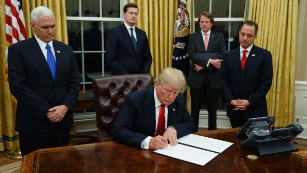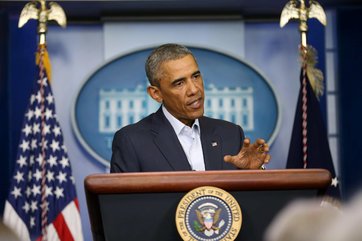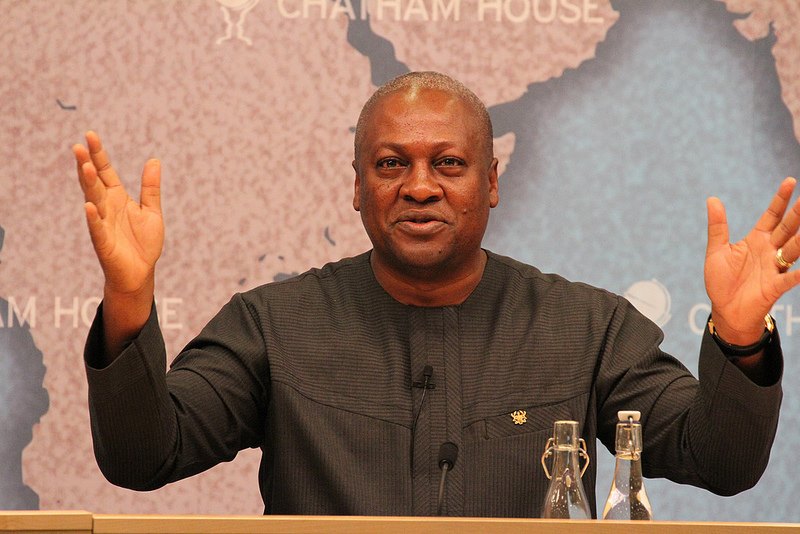The Trump administration unveiled what it called the biggest tax cuts “in history” on Wednesday, in a move that will simplify the US tax system, slash taxes for businesses large and small – including Trump’s own – eliminate inheritance taxes and set the president on a collision course with Congress over the likely $2tn-plus cost of the proposal.
Critics immediately called it “basically a huge tax cut for the rich”.
The plan would cut the US’s individual income tax brackets from seven to three (10%, 25% and 35%) and slash US corporate tax rates from 35% to 15%. “We have a once-in-a-generation opportunity to do something really big,” said Gary Cohn, chief economic adviser to Donald Trump. “This is about growing the economy, creating jobs.”
Cohn and Steven Mnuchin, the treasury secretary, were short on details of the plan that, if passed, would be the largest overhaul of the US tax system since the Reagan era. “We are moving as quickly as we can,” said Mnuchin.
The announcement comes amid a continuing row over Trump’s own taxes, with members of his own party asking for him to release his returns before pressing ahead with tax reforms. Trump has long claimed he might release these documents at the end of what he says is a long-running audit, but Mnuchin said on Wednesday that the president “has no intention” of releasing his tax returns to the public.
As well as slashing costs for his own businesses, the new proposals will also cut the alternative minimum tax (AMT), a tax designed to stop the super-wealthy from taking so many tax deductions that they avoid paying anything. Leaked documents have shown that in 2005 Trump paid $31m in tax thanks to the AMT.
Mnuchin and Cohn were pressed on how Trump would benefit from the proposals, but they avoided the questions. “What this is about is creating job and economic growth,” Mnuchin said. He described the proposals as “the biggest tax cut and the largest tax reform in the history of our country”.
The president will not be the only Trump administration official to benefit from the tax cuts. His cabinet is the richest in history and includes several billionaires.
The proposal also gets rid of almost all tax deductions, including those for state and local taxes. This creates a significant increase in tax for residents of high-tax states such as California and New York. It does leave in place existing tax dedications for charitable donations and home mortgage payments.
Mnuchin refused to commit as to whether the tax cuts would end up being revenue neutral, saying the administration was “working on a lot of details”. However, he said he felt confident that the tax cuts would “pay for [themselves] through growth, reduction of deductions, and closing loopholes”. The treasury secretary did insist, though, that “the deficit is a problem and the president is concerned about that”.
Trump has long heralded tax cuts, particularly on corporations, as a major component of his economic plan. In his joint address to Congress in February, the president previewed his proposals, saying: “My economic team is developing historic tax reform that will reduce the tax rate on our companies so they can compete and thrive anywhere and with anyone.” He added: “It will be a big, big cut.”
But on the campaign trail, he also consistently pledged to cut the US’s $19tn deficit “big-league” and “very quickly”. A 20-percentage-point cut to corporate tax rates alone would add $2.4tn to the national debt, according to the nonpartisan pressure group Americans for Tax Fairness. Frank Clemente, executive director, called the proposal a “reckless” plan “for massive tax giveaways to corporations, the wealthy, and his own family” in return for adding trillions of dollars to the national debt.
“So, how would Trump’s White House make up the shortfall? By drastic cuts to essential services and lowering the standard of living for regular American families. Unacceptable,” said Clemente. “The White House line that ‘tax cuts will pay for themselves’ is a lie that has been debunked repeatedly, including by the conservative Tax Foundation. We will fight this tax plan tooth and nail, and we’ll be joined by Americans of all political stripes in doing so.”
The plan faces significant obstacles because of the need for Democratic support, and “reconciliation” rules that place strict limits on any tax cuts that result in increases to the deficit.
The Senate majority leader, Mitch McConnell, indicated on Tuesday that Republicans would have to use the reconciliation process, which requires tax cuts to be balanced out with spending cuts. “I think it’s pretty clear we’re going to have to use a reconciliation vehicle because today’s Democratic party is very different from the Democratic party in the 80s,” McConnell said.
In a joint statement with McConnell, fellow Republicans including the House speaker, Paul Ryan, the House ways and means chair, Kevin Brady and the Senate finance chair, Orrin Hatch, gave cautious praise to the administration’s proposals. “The principles outlined by the Trump administration today will serve as critical guideposts for Congress and the administration as we work together to overhaul the American tax system and ensure middle-class families and job creators are better positioned for the 21st-century economy.”
The Republican congressman Tom Cole, from Oklahoma, said he envisioned a “very complex” path forward on tax reform.
One notable tax missing from Wednesday’s briefing was the “border adjustability tax”, a proposal to tax goods imported into and sold in the United States championed by Ryan.
The tax, backed by House Republicans, was supposed to serve as a means to offset any loss in revenue from corporate tax cuts but ran into opposition from major corporate interests, including retailers and automobile manufacturers.
Trump reportedly abandoned his support for the border adjustment tax, although Mnuchin did not definitely rule it out.
“I don’t think it’s dead,” Cole said of the border adjustment tax. “I’m very worried about blowing a huge hole in the deficit.”
The tax policy was panned by deficit hawks. The Committee for a Responsible Federal Budget (CRFB) estimated it would cost between $3-$7tn, using a baseline estimate of roughly $5.5tn because of its vagueness.
In its analysis, the Trump proposals would “increase debt to 111 percent of Gross Domestic Product (compared to 89 percent of GDP in CBO’s baseline) by 2027. That would be higher than any time in US history, and no achievable amount of economic growth could finance it.”
In a scathing statement, the group’s president, Maya McGuineas, said: “It seems the administration is using economic growth like magic beans – the cheap solution to all our problems. But there is no golden goose at the top of the tax cut beanstalk, just mountains of debt.”
However, David McIntosh, the president of the influential conservative group Club for Growth, praised the plan as “massively pro-growth”. He added: “This is the tax plan that the American people supported when they elected President Trump, so House Republicans would do well to give it their full support.”
Democrats condemned the proposals. Senator Bob Casey of Pennsylvania, who is facing re-election in 2018 in a state that Trump won, said in a statement: “This scheme is a massive tax giveaway to millionaires, billionaires and big corporations at the expense of middle-class families in Pennsylvania.
Dick Durbin of Illinois, the No 2 Democrat in the Senate, said in a statement: “President Trump should release his own tax returns if he wants to have any credibility in a debate about America’s tax code.”
The plans have split experts. Hunter Blair, budget analyst at the left-leaning Economic Policy Institute, said the proposals were “basically a huge tax cut for the rich”.
“According to the treasury, 43% of corporate tax is paid for by the top 1%. We have tried this supply-side economics before; trickle down just doesn’t work,” he said.
Chris Edwards, director of tax policy studies at the libertarian Cato Institute, said cuts in corporate tax rates in the UK and Canada had not led to lost revenues. “There is a huge amount of [tax] avoidance right now and a huge effort to park overseas. That money would come back if rates fell,” he said.
(TheGuardian US)






